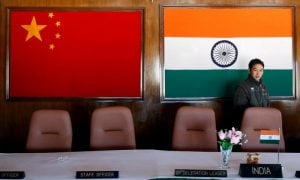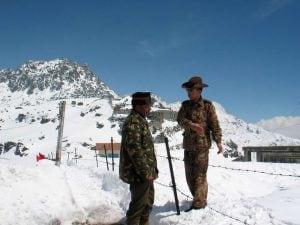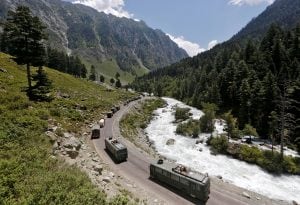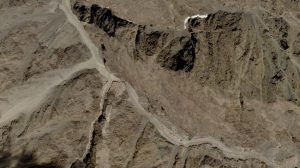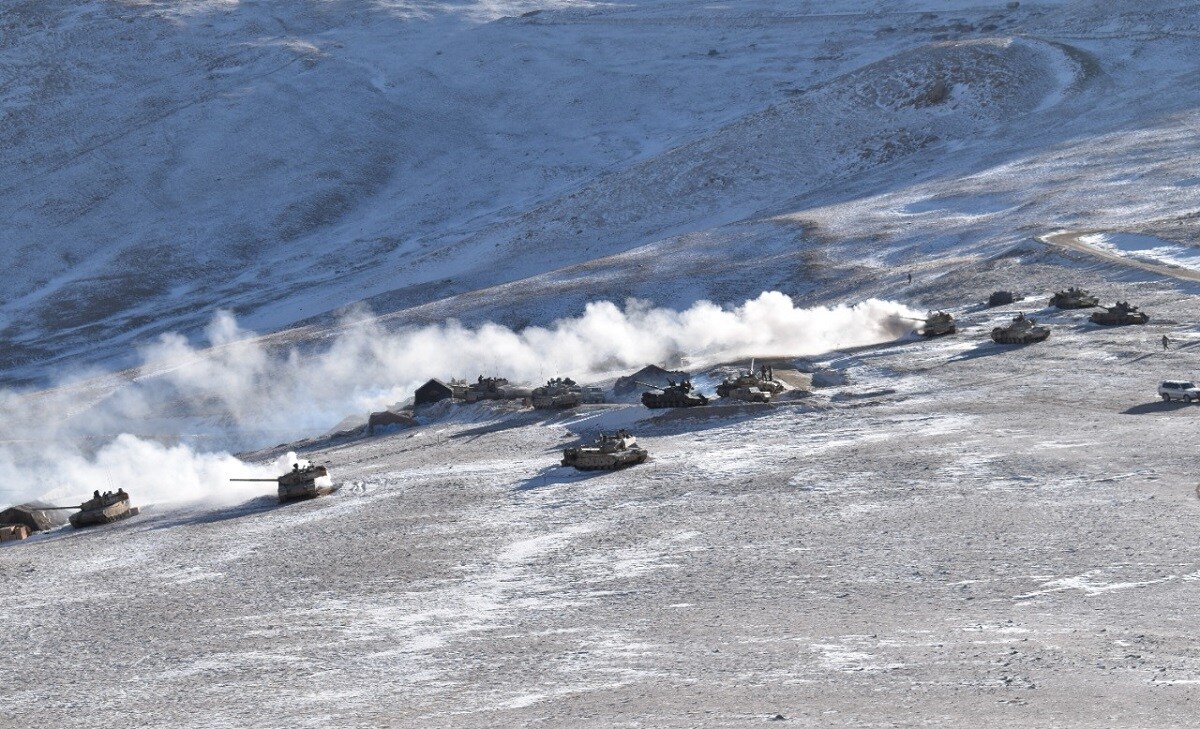Clearing the air on Chinese intrusion in Ladakh, in an exclusive interview to CNN-News18, Lt Gen YK Joshi, the General Officer Commanding-in-Chief of the Army’s Northern Command, said no land has been ceded to China.
Speaking to CNN-News18’s Defence Editor Shreya Dhoundial, Lt Gen Joshi for the first time gave an account of Chinese casualties in the violent face-off in Galwan in June 2020. He told CNN-News18 that at least 45 Chinese soldiers were killed and “China achieved nothing except the loss of face”.
Q) Lt General Joshi, thank you very much for your time here on CNN-News18. First things first, how is the disengagement process in Pangong Tso going?
The disengagement process in Pangong Tso is going on very smoothly. We started the process on February 10 and it was decided that we will do the disengagement over four steps, with the process of doing a step, verification, continuous monitoring and then we go to step two.
Every day, the disengagement process starts in a manner wherein we have a flag meeting in the morning, both sides discuss the day’s activity that how this disengagement will be done on a particular day, then the activities are conducted. In the evening, post that day’s activities, hotlines are exchanged between the two sides, confirming that both sides have done the activities for the particular day and in case there are any issues, then they are resolved at the flag meeting level and the activity is resumed thereafter.
Q) Did you expect this process of disengagement to be this rapid? February 10 was when the agreement was signed, by February 17 almost everything is over.
Yes, the Chinese have shown their sincerity of intent or purpose in carrying out the disengagement process. And as agreed earlier, we started on February 10 and they have been doing it at a very rapid pace.
Q) Can you give us some details on what has happened on the ground?
Like I said, it was to be done in four steps. Step one was the disengagement of the armour and the mechanised forces, which happened on Day 1 and it went smoothly. We are monitoring the entire process using satellites and UAVs; we have vantage points. We also have cameras placed to see each other’s activities. So, on the very next day, we saw about 200+ vehicles that had almost reached the western highway. So, that is the speed at which the Chinese have been disengaging.
Step two and three were the north and the south bank. And, step four is the final disengagement which will happen at Rezang La and Rechin La on the Kailash Range. That is how it is happening and so far it is going on very smoothly.
Q) Talking about the two concerns that are being raised, let’s start with the north bank, where the concern is that India has compromised and has ceded land. If our claim line is Finger 8 and we have stepped back to Finger 3, then a buffer zone has been created between Finger 3 and Finger 8, which is actually Indian territory and we are not patrolling that land. So, have we ceded land?
No. A very emphatic no, actually. We have to look at it in this manner that Finger 8 is our claim line. The PLA, the entire forces are going back behind Finger 8. The entire infrastructure that they created post-April last year between Finger 4 and 8, which is quite a lot, is being removed entirely. Be the dugout, the trenches, their bunkers and tents, everything is being removed.
The entire landfall between Finger 4 and 8 would be restored completely to pre-April 2020 situation. The last and most important point is they will not carry out any activity on our claimed area, that is, on the side of Finger 8, be it a military activity or any other activity. So, I think it is a big success.
In our claimed areas, we have removed the entire infrastructure. We will not be carrying out any activity till we have a discussion subsequently. After this process is over, we will arrive at new protocols and a new patrolling policy.
Q) In South bank, the concern is that we are giving up our tactical advantage by climbing down from the Kailash Range. Why are we doing it? What if the Chinese come and occupy it as soon as we vacate it?
The Kailash Range was occupied with a purpose. The Chinese surprised us initially by occupying parts of our areas — till Finger 4 of the north bank — and the negotiations were going nowhere. We had five flag meetings at the Corps Commander level and we were not succeeding in any manner. Then, I got instructions from my chief that we need to gain some leverage.
On August 29-30, we launched this operation and occupied the entire dominating heights of Rezang La, Rechin La on the south bank, on the north bank as well, where we were dominating the entire PLA deployment. This was done to gain some success on the negotiating table.
This disengagement is happening because we had taken the dominating position on the Kailash range. So, now the purpose has been achieved, we are going back to status quo ante April 2020. Plus, it has also been assured in the 9th Corps Commander Flag meeting, the areas that are now being vacated, will not be occupied.
Q) Would you then say August 29 and 30 were the turning point in this entire standoff, as far as, the areas are concerned?
Absolutely! It was the biggest turning point in this entire situation that was prevailing in the east of Ladakh post-May 5.
Q) What changed between the 8th Co-Commander meeting and the 9th Corps Commander meeting that the Chinese decide to disengage?
The first five Corps Commander Flag meetings happened before August 29 and 30, when China had a tactical advantage and we were on the back foot. Post-August 29, 30, we’ve had these three flag meetings — 7th, 8th and 9th. In these meetings, China was looking for a face-saver.
Negotiations take time. In these three flag meetings, China realised that we will not be relenting. Our message to them was absolutely clear that we will accept nothing below status quo ante April 2020, which they understood and then relented.
Q) You have seen the Kargil war. At any point in time did you think that this could blow up in an armed conflict as well?
Well, yes. There were situations where it could have blown up into an armed conflict. This happened after we did our quid pro quo options and we had occupied Rezang La and Rechin La. We had the armour and the mechanised forces sitting on the top of the Kailash Ranges. That was the night of August 29 and 30.
On 31, when the PLA wanted to come up right up to the Kailash Ranges, that was the time the situation was extremely tense. Galwan Valley had happened, the red line had been drawn. We had been given absolute free hand to conduct operations the way we wanted. And at that moment, when you see the adversaries trying to come up — the tank man, the gunner, the rocket launcher and the ATGM could, through the telescope sights, see the adversaries trying to come up the crosses — the easiest thing to do and for what you are trained is to pull the trigger.
That doesn’t need any courage, but the most difficult thing in which we need courage is not to open fire, not to press the trigger. So, we have to be very clear that there was a time when war was actually averted. We were on the edge, we were absolutely on the brink. And those were very tense and very challenging moments for us.
Q) You’ve spent most of your life in these mountains and you also speak Mandarin. Is it clear to you why the Chinese did what they did in the middle of the pandemic? What have they achieved by the end of nine months?
It’s very surprising that they did what they did. I was a brigade commander from 2009-11 when we had only 2 battalions looking after the entire Eastern Ladakh. Since then we have been improving force levels in these areas. We have been improving infrastructure in these areas and we are drawing closer to clarification of the LAC at some stage.
The Chinese have realised this and they are looking to shift the claims westwards, acquire more dominating heights, shift the LAC as far as possible till we arrive at a clarification of the LAC. So, that was their aim but then China has achieved nothing post this. They have gone back to status quo ante, all their forces have gone back, and all the landforms have been restored. They just earned a bad name and nothing else.
Q) So, Pangong Tso done. What next?
The day disengagement is completed, we will hold the 10th Co-Commander meeting within 48 hours, wherein we will discuss the other friction areas which still need to be resolved. Once we sit down and talk about those, through negotiations, we’ll resolve the friction areas and proceed ahead towards the clarification of LAC at some stage.
Q) In Gogra hot springs, are you expecting any roadblocks as far as disengagement is concerned? Also, what about Depsang and Demchok? I believe the Chinese are stocking up their patrols in Depsang. The claim is also that we have lost hundreds of kilometres of territory there. What is the status as far as Depsang and Demchok are concerned?
These areas are not volatile right now. The troops are not in contact. Coming particularly to Depsang, this predates the present situation. This is a legacy issue. In 2010, when I was a brigade commander here, Depsang was a flash point then too.
Secondly, we must remember that this is the area of differing perception of their claim line and our claim line. The third thing is that here the troops are not in contact. What happens is when our patrols go, they give us a face-off. When their patrols come, we give them a face-off. Both sides don’t allow each other to reach their respective claim lines. So, that is where the situation stands as of now. And I am sure with the discussion happening subsequently, we should be able to resolve the issue as well.
Q) How have the last nine months been personally for you?
Last nine months have been very, very challenging. There have been very tense moments. As an Army commander of an operational command, one looks at clear cut directives from the bosses. In this respect, I can say with a lot of clarity that there was no ambiguous direction that was coming to me from my chief.
In fact, he gave me a total free hand to conduct the action as I deem fit. Of course, I used to make plans, discuss with him and then the plan used to rollout on the ground. But there was no ambiguous order, especially post Galwan, we were totally given a free hand. And that was the time the situation was pretty tense and worrisome.
Q) Speaking about Galwan, the Indian Army never put out the number of the fatalities that the Chinese had suffered. Is there a rough estimation that we have? What is a number that will not enter the arena of speculation?
I don’t want to make an estimate. While the incident happened, we had our OPs sitting and observing the area. We were able to count a large number of casualties, which were being picked up on stretchers and taken back. More than 60 actually, but whether they were fatal or non-fatal, we can’t say with authority so I will not give a figure. But recently, TASS, the Russian agency had put out a figure of 45 and I think that could be the figure we can look at.
Q) But it could be more than that as well?
It could be more than that as well.
Q) The process of disengagement is underway. When you look back do you feel that there was possibly a lapse in India detecting China’s movements and more importantly intentions?
I would not say it was a lapse. Every year the PLA comes on the western highway in the area of Khangsewar, Saidullah, and they carry out the exercises and last year the same thing happened. But if we were to hazard a guess on China’s intention, that was not very clear immediately. That got clear when they came to Galwan, up to patrol point 15, 17 Alpha and subsequently on the north bank as well.
Once the intention was clear, that was the time we were going to react in the manner we wanted to react. The entire Indian Army mobilised, we got our C-17s to come, reserves were sidestepped and we were able to meet them, we could place where they were coming in on the LAC. Then, of course, August 29-30, was the time when the tables turned on the PLA. On 29-30, we surprised them.
Q) Could you have ever imagined that you would have tanks at these heights. How did you manage that?
One would have never imagined. I spent my entire life in Ladakh having commanded the brigade, the division, the co-area. Prior to May 5, I would have never imagined that there will be a situation wherein this kind of movement, that was happening in eastern Ladakh, will take place. The number of forces, armour, artillery, mech, ammunition that we moved so close to the LAC was absolutely unimaginable. But it’s time we renew our focus to normal borders. The Army headquarters has already ordered the rebalancing, which will happen. We need to look at borders that will happen in the right earnest.
Q) In the initial days, water was a massive challenge for the Indian Army. How did you overcome that?
Water, initially, was a challenge. Climbing up the mountains to fetch water is a problem. Initially, we got bottled water for the troops. Subsequently, we put engineers on the job and we were able to locate and dig about 20 bore wells.
Q) In the middle of the stand-off?
In the middle of the stand-off! We got the bore wells coming in, we got the pipelines. With pumps and pipes pumping water right up to Rezang La, Rechin La as well. That is how we managed. You know Indian Army innovates, on the feet!
Q) Jugaad?
Yes, jugaad. Our boys are very good at that.
Q) What about your boys? They have shown us what they are made of…
The entire credit of this success goes to the hardy soldiers of the Indian Army, who never let us down. In such difficult super altitude area, freezing temperatures, going down to minus 40 degree celsius, and they are staying in tents to start with. Later, of course, better tents were set up and bedding was arranged. The junior leaders were there with the training, with the drills that they had adopted and were able to execute these plans in an absolutely smooth manner and give us the success.
Q) Spending a winter — the Ladakh winter — where temperatures are dipping to minus 45, minus 50 degrees, was the weather, if not bigger, an equally challenging enemy as the Chinese?
Yes, the weather was a big challenge but our troops are very hardy and we have a lot of experience. The troops have served in the glaciers, they have served in the high altitude areas. We have drills in places to immediately look at the weather. Of course, PLA was a challenge that goes without saying.
Q) Here’s a question devoid of any nuance, which people across the country ask. Can we trust the Chinese? Can we afford to pull back the entire deployment just to have another situation like this in the next 2-3 years?
Given the fact that they broke all the agreements and they did what they did, currently, the trust levels are low. We have to build up this trust again if we want to have peace. In fact, I am reminded of a Chinese proverb, which translates to this — a relative, who is far away, cannot be equated to a neighbour who is very close to you. It means it is better to have good relations with your neighbour than depend on your relative, who is far away. So, I want to throw the proverb back to the Chinese that we can be good neighbours but the trust level has to be there on both sides. So, the Chinese have to do their part to develop this trust now.
Q) Are you anticipating Chinese aggression along the LAC. Are there worries?
There are worries, that goes without saying, but then we have discussed at the Corps commander meeting that the area that both sides are vacating or any other areas along the LAC will not be occupied by either. That understanding has been reached, so let’s see how both the sides follow.
Q) What is then the resolution for the India-China relationship, as far as, the border is concerned? Do you see the border being demarcated at any point in time? Is that the ultimate solution?
Yes, that is the ultimate solution that goes without saying. The first step is the clarification of the LAC. Till the time we have our respective perceptions of the LAC these friction points will continue. When the PM went to China the first time, he sort of flagged all the places in China that we need to go ahead and do the clarification of the LAC and only then we can have good relations.
We can’t have friction on the border and continue with the rest of the relations in a normal manner. That can no longer happen. So, we have to look at the boundary resolution finally but we have to start with a clarification of the Line of Actual Control on the ground.










 Listen to the Article
Listen to the Article  Daily Newsletter
Daily Newsletter





